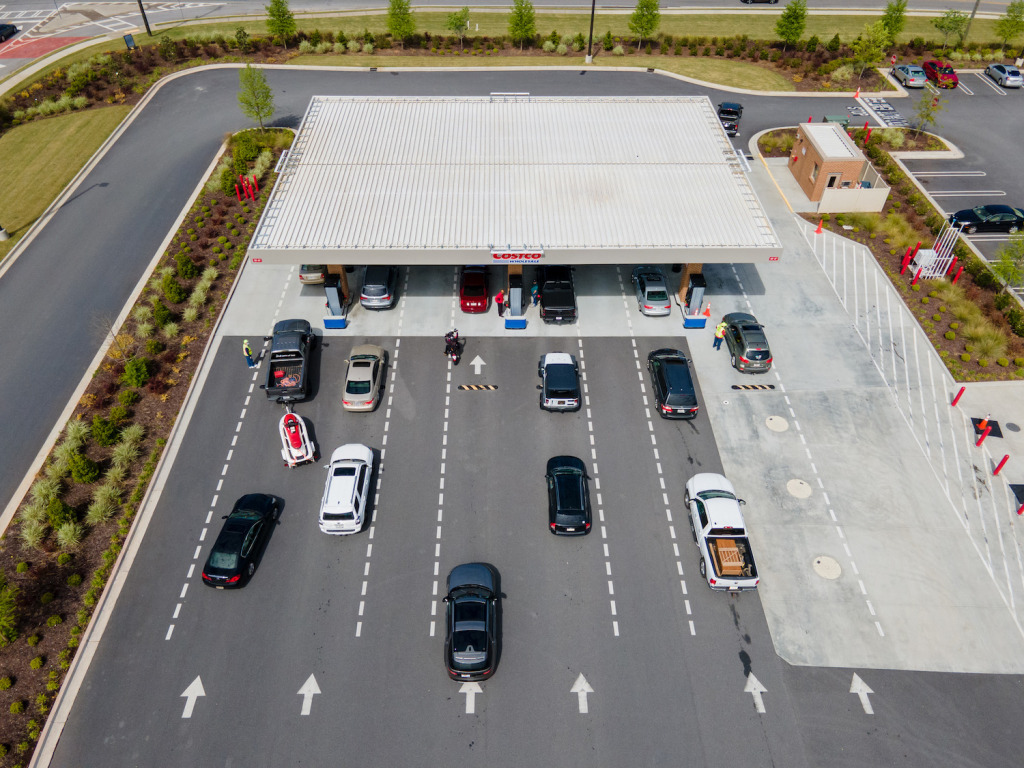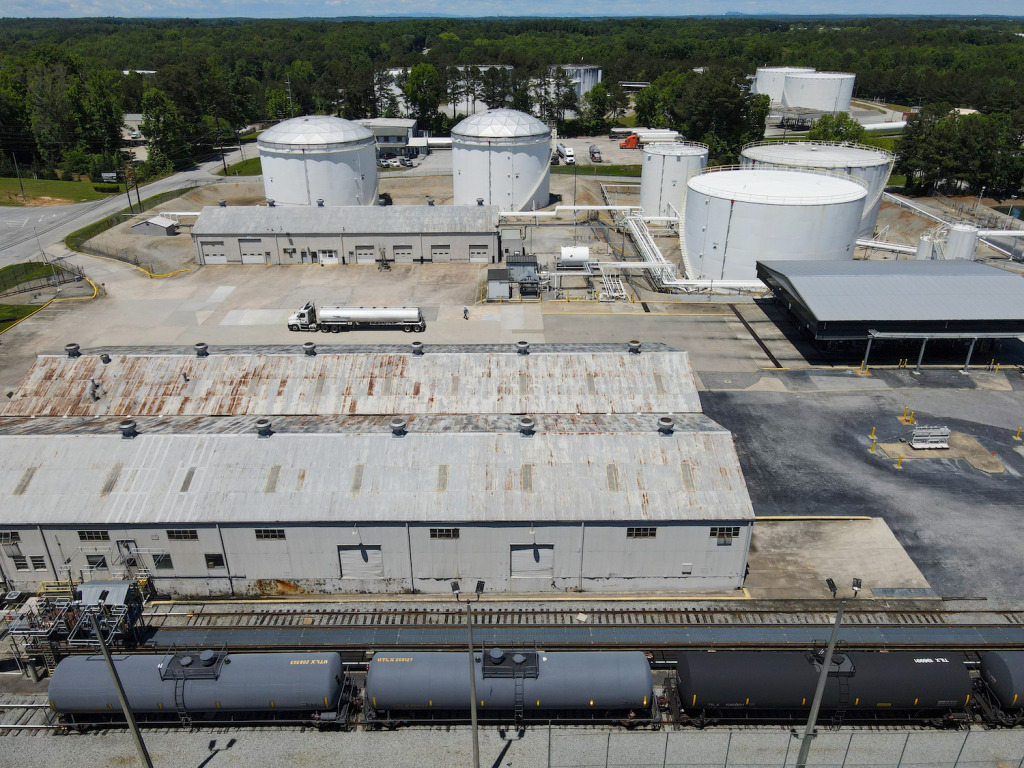Subscriber Benefit
As a subscriber you can listen to articles at work, in the car, or while you work out. Subscribe NowThe drivers stuck in gas lines after the Colonial Pipeline shutdown, the Texans freezing in their homes after the February grid collapse, the Californians sweltering through their own power failures last summer—all were paying the unintended and unexpected price of efficiency.
The market-driven energy sector has spent a decade or more cutting costs, streamlining and digitizing. Four big oil refineries have shut down in Pennsylvania and New Jersey since 2010 because it’s cheaper to bring in gasoline by pipeline from the Gulf Coast, 1,500 miles away—as long as that pipeline stays in operation. Texas and California have driven the price of electricity down by throwing out the old regulatory structure—the structure that made sure utilities earned enough to invest in backup resources.
In the name of efficiency, “resilience was assumed,” said Daniel Yergin, the historian and author of “The New Map: Energy, Climate, and the Clash of Nations.”
But even as American fossil fuel producers proudly declared the country to be energy independent once more in recent years, the energy sector has stripped redundancy out of its systems, at the risk of leaving customers in the lurch when things go wrong. Some companies have declined to take the precautions needed to survive the unexpected, whether it’s bad weather or a cyberattack.

America’s power grid and pipelines and refineries are aging, under strain, often retrofitted with new technology in an effort to keep up. Critics have been warning for years of the dangers of underinvestment and diffident maintenance, and pointing to new threats linked to everything from climate change to terrorism to digital crime.
On May 7, Continental Pipeline operators realized their computer systems were under attack, and to prevent further damage, shut down their 5,500 miles of pipeline connecting the Gulf Coast to the Eastern Seaboard. Southeastern states were hit hardest because they have fewer alternate sources of fuel than the Northern cities, which enjoy greater storage capacity and access to salt-water shipping.
Panic buying by motorists ensued, making the difficult situation worse. By Thursday, service on the pipeline had resumed, but it will take days to unsnarl the mess.
No energy company, of course, welcomes a disruption. Drue Pearce, who was deputy administrator of the Pipeline and Hazardous Materials Safety Administration under President Donald Trump, said she doubts “there is a pipeline company in the country that doesn’t have a robust system” of security, though the federal government has declined to mandate them.
But when there’s a relentless focus on quarterly earnings, analysts say, it’s easy to lose sight of the risk of a calamitous event.
There’s also a reluctance among some old-line companies to recognize that new risks—such as cyberattacks—require new strategies. It’s a “this-is-the-way-we’ve-always-done-it mentality,” said Michael Davis, a clinical professor of economics at Southern Methodist University’s Cox School of Business.
That’s starting to change, Yergin said, in part thanks to the recent misfortunes. “Companies are now factoring resiliency more into their planning than they ever have in the past,” he said.
And the Biden administration wants to accelerate the trend. Its proposed infrastructure plan calls for an investment tax credit to spur the building of at least 20 gigawatts of new high-voltage-capacity power lines, and the creation of a Grid Development Authority to further the effort.
But fossil fuels are a more complicated matter.
The Atlantic Refinery Co. opened a plant in the Point Breeze neighborhood of Philadelphia, on the banks of the Schuylkill River, in 1870. It handled crude oil brought in by trains from western Pennsylvania and refined it, primarily into kerosene for lamps and lubricants, mostly for local customers.
Over the decades, it survived catastrophic fires, bitter labor disputes, the growth of the automobile culture and the internal combustion engine, the withering of Pennsylvania’s oil fields, and several changes of ownership. Under Sunoco, it became the largest refinery on the East Coast, turning out 335,000 barrels a day.
When the end came, after another fire two years ago, and under new owners, it employed 1,100 workers and was paying them $100 million a year. It left a legacy of a century and a half of contamination of air, water and ground. Plenty of its neighbors were glad to see it shut down.

Since 2019, Philadelphia has relied more than ever on the Colonial Pipeline, which supplies 45% of the East Coast’s fuel. If the pipeline had been shut down for six weeks rather than six days, the consequences would have been devastating. Yet in that hypothetical but by no means impossible disaster, at least Philadelphia, like New York and Baltimore, has access to the sea, and it would be able to receive gasoline from tankers and barges; inland cities such as Atlanta and Charlotte, wouldn’t even have that opportunity.
In the short term, the Biden administration moved to relax a variety of regulations to try to get gas to motorists, though critics say it hasn’t moved fast enough. Susan Grissom, of the American Fuel and Petrochemical Manufacturers trade group, said she would have liked to see the White House quickly issue a blanket waiver of the Jones Act, which normally prohibits foreign-flagged ships from carrying cargoes between American ports, rather than doling out waivers on a case-by-case basis.
“If by [last] Saturday or Sunday tankers were leaving the Gulf Coast with gasoline, that would have been a pretty strong message,” Yergin said.
In the longer term, though, the Colonial debacle presents the administration with a dilemma. Biden wants to move away altogether from fossil fuels. His only reference to oil in the American Jobs Plan description is a proposal to cap depleted wells. No one is going to suggest building a new, parallel pipeline.
As Akshaya Jha, an assistant professor of economics and public policy at Carnegie Mellon University, said, it is a tough call over how much effort to expend on upgrading the security of a pipeline, parts of which go back 60 years, while beginning the clean energy transition. For now, drivers in Atlanta and Charlotte still need gasoline.
“There is that fundamental trade-off,” Jha said.
In 2012, a Boston engineer named Martin Tallett was the lead author of a study for the American Petroleum Institute, the oil industry trade group, that considered the effect of closing East Coast refineries. (General purpose refineries are still operating in Delaware City, Del., and Linden, N.J.) It noted that heavy reliance on the Colonial Pipeline was not without risk. “There are concerns over the adequacy of logistics capacity to move replacement products into the Northeast, notably from the Gulf Coast,” it found.
In an interview this week, Tallett said that economically it appeared to make sense to close the East Coast refineries: They were expensive to operate, had to deal with tightening state environmental regulations and were increasingly out of date. But the Colonial shutdown following a ransomware attack from a group apparently based in Russia, he said, “dramatically alters the picture.”
In terms of strategic security, “you would normally think that having a domestic pipeline up the coast would be good enough,” he said. “This week’s events have certainly exposed that vulnerability.”
Tallett argues that resiliency can best be achieved by building significantly more storage capacity in the region’s metropolitan areas. That would come at a cost, but it would create a reserve.
California suffered rolling blackouts last summer as an unexpectedly intense heat wave struck the West. Demand soared. Some equipment failed in the heat. Utilities were forced to cut off power in some cases as a precaution against sparking even more devastating wildfires. Proposals over the years to bury the transmission lines have made little headway.
Normally California would turn to its neighboring states to buy power, but the heat wave had left them none to spare.
The utility rates in California do not include a portion for building future capacity, and that puts it under strain during periods of high demand. Officials there say they can’t build a system that would be impervious to every heat wave. There’s a trade-off, they say, between reliability and affordability.
In Texas, in February, demand rose as temperatures plummeted, but the freezing weather at the same time knocked out generating facilities that had not been winterized. Wind turbines as well as gas systems that feed power plants froze. Over the course of a week more than 100 people died as a result of the failures.
Texas officials let the price of electricity soar 300-fold in a bid to get more power back into the system. It didn’t work, but it left the state reeling from the tremendous bills for the electricity that was consumed, and the courts will be sorting that out for years.
Davis, at SMU, said that even having lived through the Texas freeze, he doesn’t think it would make sense to winterize every piece of equipment in the gas and electricity sector there, because bitterly cold weather is likely to remain relatively rare. But maybe some key components could be.
“It’s not an either-or,” he said. “You have to spend $3 billion and do everything? Or spend zero dollars and do nothing? No.”
But the country is “losing some degree of redundancy,” he said, and Americans should think about how to address that as creatively and efficiently as possible.
Pearce, the former PHMSA official, said it is impractical for the government to regulate pipeline security measures. “The technology moves so quickly. It’s a constant race to try and stay in front of it. That’s very difficult to regulate,” she said. “But you have to have resiliency in your system. You have to have backup.”
The issue is not unique to energy. A proposal to build redundant rail tunnels under the Hudson has made little progress, and as a consequence, 200,000 daily riders leave and enter the nation’s largest city through the two 110-year-old, salt-corroded existing tunnels, badly in need of refurbishment. A failure of one or both would be a nightmare.
Carmakers have been stymied by a lack of computer chips, 80% of which typically come from one manufacturer, in Taiwan. One possible backup to that long, tenuous supply chain would be computer chip factories in Texas—but their production was seriously hampered by the freeze that took down the state’s efficient but fragile electric grid.
Please enable JavaScript to view this content.

Have the WaPo “journalists” reached out to Greta to see what we should do?